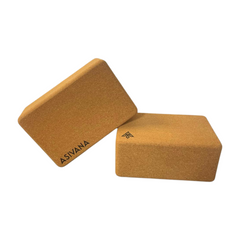Vinyasa (Linking Mechanism)
Jack UtermoehlShare
Vinyasa is a Sanskrit term often translated as "to place in a special way" but also known as "linking mechanism". or simply "flow".
In modern yoga, it refers to the conscious linking of breath and movement in a flowing sequence. More than just choreography, Vinyasa is a framework that integrates intention, breath, and alignment to create a meditative and purposeful practice.
It reflects the principle that every movement, like every moment in life, is part of a greater continuum—fluid, intentional, and alive.
Etymology and Meaning
Sanskrit Spelling: विन्यास
Root Words: "Vi" (in a special way) + "Nyasa" (to place, to arrange)
Translation Variations: Placement, sequence, progression, conscious arrangement
Pronunciation: Vinyāsa [vin-YAH-sah]
Vinyasa is not a style but a principle: the intentional linking of movement, breath, and awareness into a flowing continuum.
Vinyasa in Yogic Philosophy
Vinyasa originates in the Krishnamacharya lineage and the Ashtanga Yoga tradition:
- In Ashtanga Yoga: Every movement has a designated breath count and drishti (gaze point), forming a fixed Vinyasa sequence.
- In Modern Vinyasa Yoga: Sequences are more creative and fluid, often thematically built around peak poses or intentions.
- In Yoga Therapy: Vinyasa Krama refers to intelligent, progressive sequencing tailored to individual needs.
Vinyasa teaches that transitions are as important as destinations—how we move is just as vital as where we arrive.
Symbolism and Elements
- Color: Orange or gold, symbolizing flow, transformation, and presence.
- Element: Water, representing adaptability and movement.
- Mantra: Soham ("I am that")—a breath mantra that mirrors the natural inhale and exhale rhythm.
- Mudra: Vayu Mudra, symbolizing movement and internal flow.
Yoga Essentials for Your Practice
Support your yoga journey with high-quality, sustainable props designed for comfort and stability.

Crafted from eco-friendly cork for durability and a comfortable practice.
$24
Shop Now
Includes everything you need to get started: a mat, blocks, and a yoga strap.
$120
Shop NowPractical Application
In Yoga Practice
- Link each breath with movement—inhales to expand or rise, exhales to contract or ground.
- Flow through postures as transitions, not just endpoints.
- Embrace silence and stillness between sequences as part of the Vinyasa rhythm.
- Counting the poses in surya namakara sequence.
In Daily Life
- Approach tasks with mindfulness and intentional sequencing.
- Recognize transitions in life (e.g., seasons, jobs, relationships) as sacred and worthy of presence.
- Let breath be your anchor in moments of movement, change, or challenge.
Quotes and Wisdom
"Vinyasa is not about the pose—it’s about the space between the poses."
"Every movement, when guided by breath and intention, becomes a meditation."
Modern Relevance
In today’s culture of multitasking and distraction, Vinyasa invites us to slow down and synchronize body, breath, and mind. It reminds us to honor the process, not just the goal—to flow with awareness through both practice and life.
Related Concepts
Asana: Physical postures that are linked together in Vinyasa sequences.
Pranayama: Breath regulation, which anchors and shapes the flow.
Drishti: Focused gaze, guiding attention within the flow.
How to Cultivate Vinyasa
Mindset: See every breath and movement as intentional and sacred.
Actions: Practice moving with breath in both yoga and life.
Reflection: Ask, “What is the quality of my transitions?” and slow down enough to feel them.
Suggested Reading
- The Heart of Yoga by T.K.V. Desikachar
- Moving Into Stillness by Erich Schiffmann
- Yoga Mala by Sri K. Pattabhi Jois
Conclusion
Vinyasa is more than a sequence of poses—it is a living rhythm of intention, breath, and awareness.
By embodying this principle, we learn to move through life with grace, presence, and purpose, honoring not just the moments of stillness, but the spaces in between.






